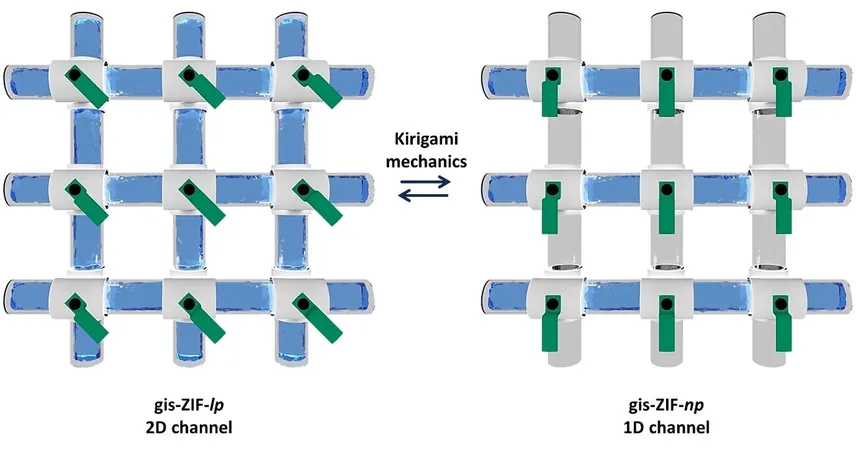
Revolutionary Foldable Molecular Paths: Transforming Nanoscale Technology Inspired by Paper Folding
2025-01-06
Author: Michael
Introduction
Researchers have taken a profound leap by drawing inspiration from the simple act of folding paper, leading to groundbreaking innovations at the molecular level. A team led by Professor Wonyoung Choe from the Ulsan National Institute of Science and Technology (UNIST) in South Korea has engineered foldable molecular paths that can dynamically react to environmental changes.
The Focus on ZIFs
The team’s focus was on zeolitic imidazolate frameworks (ZIFs), highly porous materials renowned for their exceptional flexibility and adaptability. These unique frameworks can alter their size, shape, and alignment at the nanoscale, responding to varying temperature, pressure, and gas interactions. This intriguing characteristic allows the ZIFs to function much like valves, effectively controlling gas flow akin to how one might regulate water flow through a pipe.
Methodology
The study, which has recently been published in the prestigious journal Angewandte Chemie International Edition, utilized advanced X-ray diffraction techniques to meticulously observe how these molecular frameworks respond to different stimuli. The results were promising, revealing that the tetrahedral zinc centers in ZIFs act as hinges, permitting flexible folding and unfolding.
Implications and Applications
But the implications of this research extend far beyond mere theoretical interest. The potential applications are vast and exciting. Imagine filters that can adjust themselves to efficiently capture harmful gases or advanced purification systems tailored to selectively eliminate specific contaminants. Such adaptable technologies could revolutionize industries ranging from environmental protection to public health.
The Plumber's Nightmare
Furthermore, the researchers highlighted a simplified version of the so-called “Plumber's Nightmare,” an intricate network of pores. Their findings suggest that mastering these foldable designs could unlock new solutions to complex challenges in material science and engineering.
Conclusion
As we stand on the brink of a new era in nanotechnology, the fusion of simplicity and innovation holds the promise of making our world safer and more efficient. Stay tuned to see how scientists build on this pioneering work to foster a cleaner, more adaptive future!









 Brasil (PT)
Brasil (PT)
 Canada (EN)
Canada (EN)
 Chile (ES)
Chile (ES)
 Česko (CS)
Česko (CS)
 대한민국 (KO)
대한민국 (KO)
 España (ES)
España (ES)
 France (FR)
France (FR)
 Hong Kong (EN)
Hong Kong (EN)
 Italia (IT)
Italia (IT)
 日本 (JA)
日本 (JA)
 Magyarország (HU)
Magyarország (HU)
 Norge (NO)
Norge (NO)
 Polska (PL)
Polska (PL)
 Schweiz (DE)
Schweiz (DE)
 Singapore (EN)
Singapore (EN)
 Sverige (SV)
Sverige (SV)
 Suomi (FI)
Suomi (FI)
 Türkiye (TR)
Türkiye (TR)
 الإمارات العربية المتحدة (AR)
الإمارات العربية المتحدة (AR)